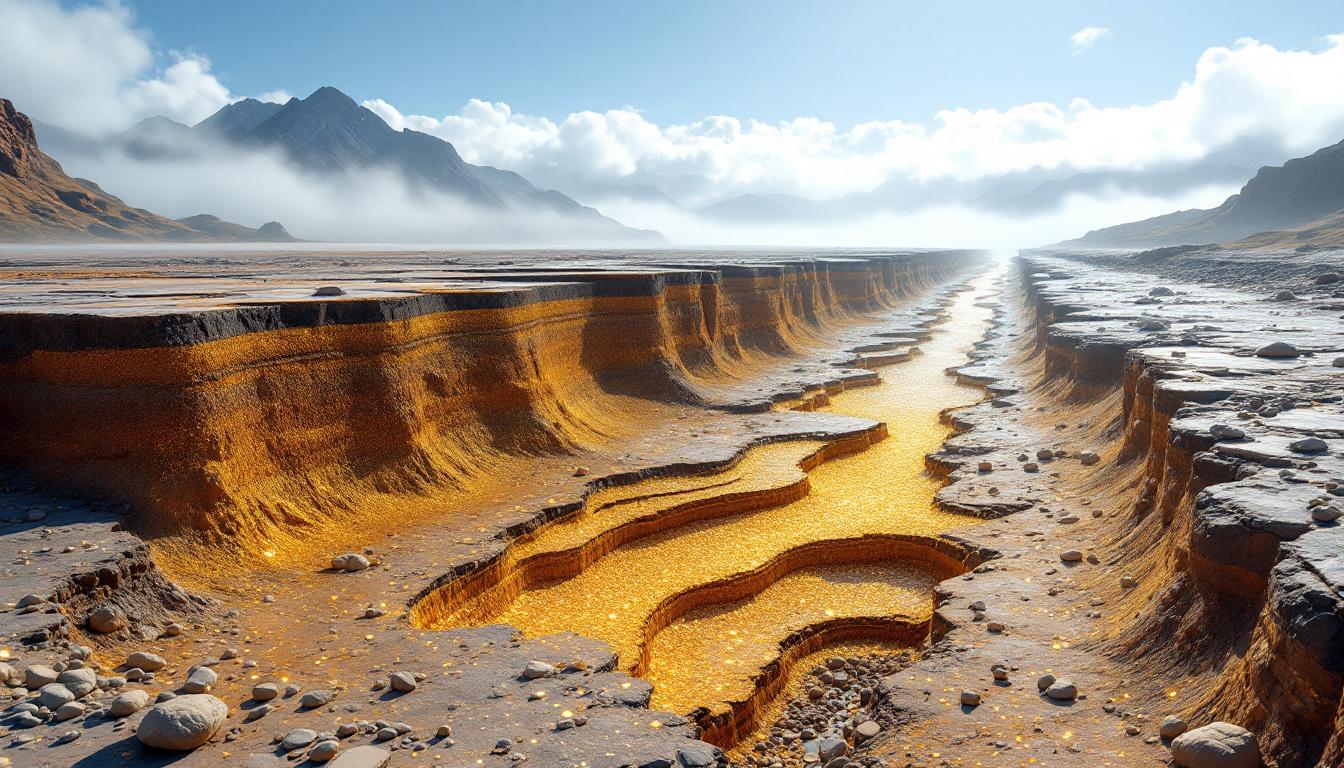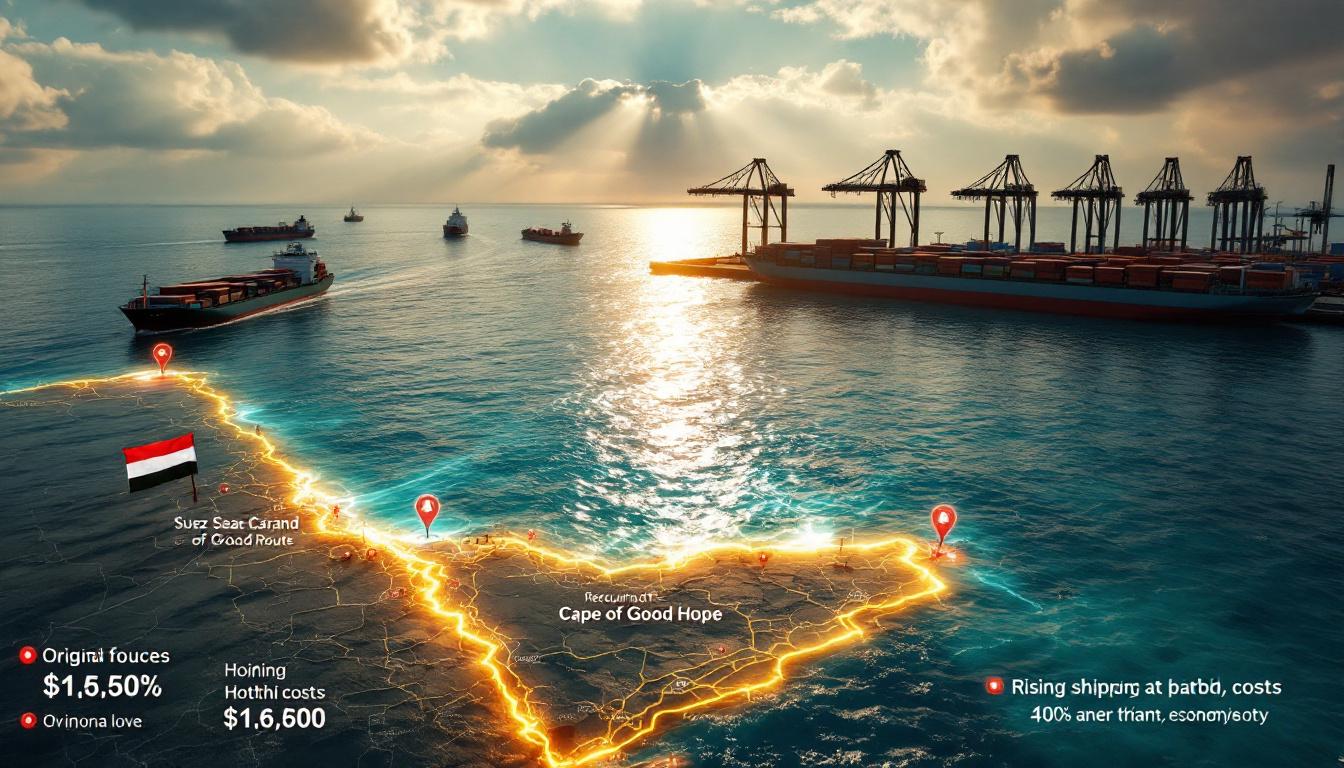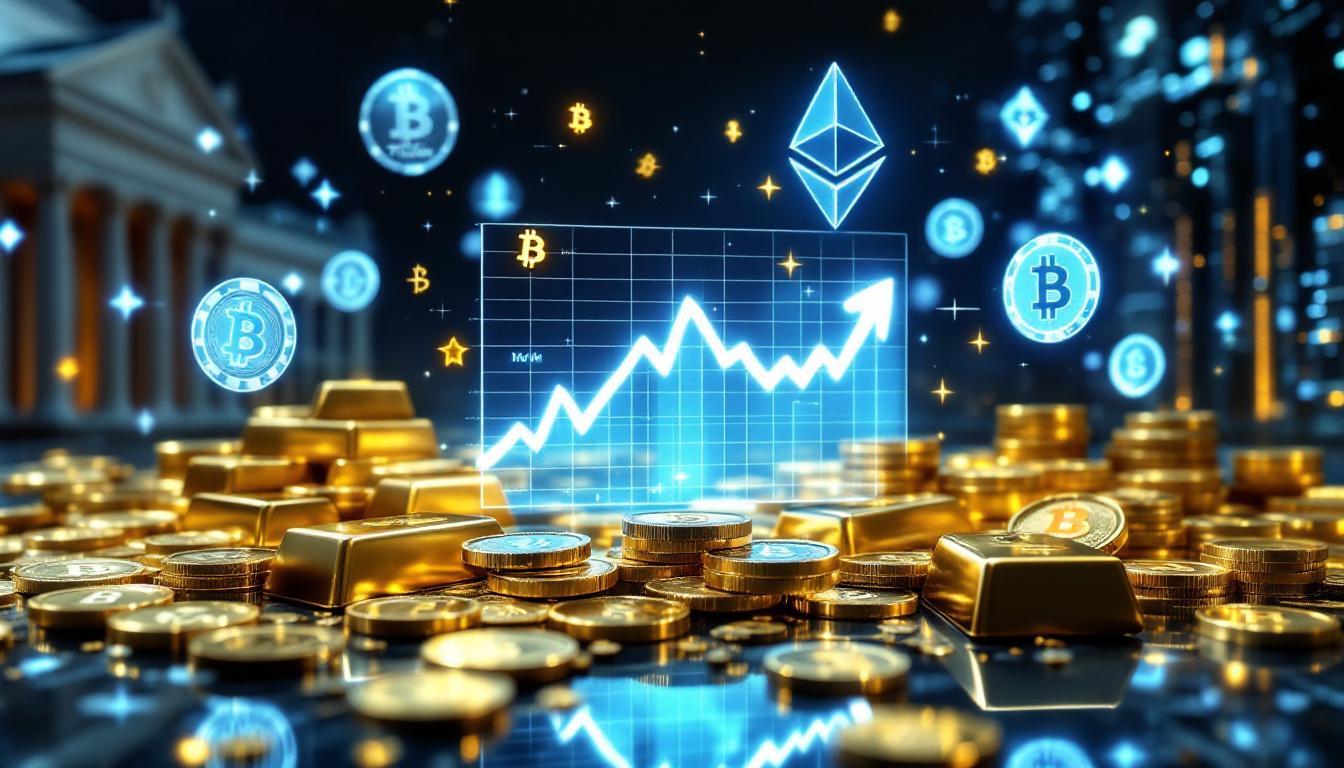Why Are Japan and the EU Joining Forces on Rare Earths?
The recent announcement of a strategic partnership between Japan and the European Union marks a watershed moment in global resource politics. This collaboration, scheduled to be formalized at the Japan-EU leaders' summit on July 23, 2025, represents a deliberate pivot away from China-dominated supply chains for critical minerals—particularly rare earth elements.
These strategic resources, though relatively abundant in Earth's crust, have become focal points in an intensifying global competition for technological and industrial advantage. As electric vehicles, renewable energy systems, and advanced defense technologies become increasingly essential to economic security, control over their fundamental components has evolved into a geopolitical imperative.
The Strategic Importance of Rare Earth Supply Chains
Rare earth elements comprise 17 metals with unique properties that make them irreplaceable in numerous high-tech applications. Despite their name, most rare earth reserves are relatively abundant in the Earth's crust, but they rarely exist in concentrated, economically viable deposits. This geological reality has contributed to the current market concentration.
The market significance cannot be overstated. These minerals form the backbone of technologies driving the green energy transition and digital transformation. Permanent magnets containing neodymium, praseodymium, dysprosium, and terbium power electric vehicle motors and wind turbines. Cerium and lanthanum enable petroleum refining and emissions control. Europium and yttrium create the vibrant colors in displays and energy-efficient lighting.
"Rare earths represent the invisible infrastructure of the 21st century economy. Nations without secure access face not just economic vulnerability but technological stagnation." — Japan Ministry of Economy, Trade and Industry (METI) policy brief, 2024
Beyond commercial applications, rare earths are critical to defense systems. Each F-35 fighter jet contains approximately 920 pounds of rare earth materials in its guidance systems, communications equipment, and structural components. Modern naval vessels rely on rare earth magnets for their electric drive systems, while precision-guided munitions depend on rare earth phosphors for targeting.
The strategic calculus is clear: whoever controls these materials gains leverage over global technology development and manufacturing. This reality has driven Japan and the EU to unprecedented cooperation.
What's Driving This New Partnership?
China's Tightening Export Controls
China's dominance in the rare earth market is the product of decades of strategic investment and policy support. Currently controlling approximately 60% of global mining output and a staggering 87% of processing capacity, China has transformed its geological advantage into industrial and geopolitical leverage.
Recent developments have accelerated concerns among major economies:
- In May 2025, Beijing implemented strict export controls on rare earth alloys, mixtures, and finished magnets
- The policy requires detailed end-use certifications and places caps on quantities
- Japanese and European manufacturers face potential production delays of 3-6 months
- Price increases of 30-45% for critical elements have been reported since the restrictions
These actions follow a familiar pattern. In 2010, during a territorial dispute with Japan, China restricted rare earth exports, causing prices to spike by as much as 1,400% in some cases. Though less dramatic, the current measures have sent shockwaves through global supply chains.
Chinese officials maintain these controls serve environmental protection and resource conservation goals. However, industry analysts widely interpret them as strategic leverage in broader technology and trade competition.
Growing Global Competition for Critical Minerals
Japan and the EU aren't alone in their scramble to secure alternative rare earth supplies. A global race is underway:
- United States: Recently signed a multibillion-dollar agreement with MP Materials to revitalize the Mountain Pass mine in California and build domestic processing capabilities
- Australia: Accelerated permitting for new rare earth mines and invested $2.1 billion in processing facilities
- India: Initiated negotiations with Chile and Peru for critical minerals energy security through free trade agreements
- Canada: Committed $3.8 billion to critical mineral development under its Critical Minerals Strategy
These initiatives represent more than economic maneuvering—they signal a fundamental restructuring of global supply chains around geopolitical alignment rather than market efficiency alone.
Investment in alternatives is accelerating. Research into rare earth substitutes has received substantial funding, with promising advances in samarium-cobalt and iron-nitride magnets that could reduce dependency on certain elements. Meanwhile, urban mining—the recovery of rare earths from electronic waste—has gained traction, with Japan's Mitsubishi Materials achieving 96% recovery rates from used magnets.
How Will the Japan-EU Partnership Work?
The "Economic Two-Plus-Two" Framework
The collaboration introduces a novel diplomatic structure dubbed the "Economic Two-Plus-Two"—a framework previously reserved for security dialogues now applied to resource security.
The framework will bring together:
- Foreign ministers from Japan and the EU
- Economy ministers from both parties
- Stéphane Séjourné, European Commission's Executive Vice President for Prosperity and Industrial Strategy
- Technical experts from mining, processing, and manufacturing sectors
This high-level engagement underscores the elevation of critical minerals to national security status. The inaugural meeting, scheduled for summer 2025, will establish working groups focused on:
- Supply chain vulnerability assessment
- Joint investment strategies
- Regulatory harmonization
- Research and development coordination
The framework represents a significant evolution in international economic cooperation, moving beyond traditional trade agreements toward integrated industrial policy coordination.
Public-Private Partnership Model
At the operational level, the Japan-EU initiative will leverage public-private partnerships to mobilize both government resources and corporate expertise.
Key elements of this approach include:
- Joint investment funds: Combined resources from Japan's JOGMEC (Japan Oil, Gas and Metals National Corporation) and the European Investment Bank to finance mining and processing projects
- Technology exchange platforms: Sharing separation and purification techniques between European research institutions and Japanese firms
- Regulatory simplification: Harmonizing environmental and safety standards to reduce compliance costs
- Risk-sharing mechanisms: Government guarantees for private investments in high-risk, high-reward projects
Japanese companies already have significant expertise in rare earth technologies. Hitachi Metals produces high-performance neodymium magnets, while Shin-Etsu Chemical has developed advanced processing techniques. European firms like Solvay (Belgium) have specialized in separation technologies.
The partnership will help overcome the substantial barriers to entry in rare earth processing—particularly the capital intensity and technical complexity that have allowed China to maintain its advantage. A modern separation facility requires investments of $200-800 million and takes 5-7 years to reach full operational capacity.
What Are the Key Objectives of This Collaboration?
Reducing China Dependency
The primary goal of the partnership is straightforward yet ambitious: to create viable alternatives to Chinese rare earth supplies.
Current vulnerability is acute: Japan imports approximately 58% of its rare earth materials from China, while the EU's dependency reaches a concerning 98%. This exposure creates unacceptable risk for critical industries in both regions.
The partnership aims to:
- Diversify supply sources through investments in mining projects in Australia, Vietnam, and Brazil
- Develop processing capabilities outside China, with facilities planned in Estonia, France, and Japan
- Establish strategic minerals reserve equivalent to 90 days of consumption
- Create secondary supply streams through recycling and recovery
For Japan, this initiative builds on earlier efforts. Following the 2010 crisis, Japanese firms reduced their dependency on Chinese rare earths from 91% to the current 58% through investments in Australia's Lynas Corporation and domestic recycling. The EU, however, has made limited progress despite identifying rare earths as "critical raw materials" in 2011.
Developing Sustainable Supply Chains
Beyond diversification, the partnership emphasizes sustainability—both environmental and economic.
This dual focus addresses several challenges:
- Environmental impact: Traditional rare earth processing generates significant toxic waste and radioactive byproducts
- Social concerns: Mining operations often raise human rights and labor issues
- Economic viability: Alternative supply chains must eventually compete without permanent subsidies
The initiative will implement:
- Advanced extraction techniques that reduce chemical usage by up to 70%
- Closed-loop processing systems that eliminate liquid waste discharge
- Energy efficiency measures to reduce the carbon footprint of separation processes
- Fair labor standards and community benefit agreements at mining sites
Japanese companies have pioneered environmentally improved processing methods. Mitsubishi Chemical's separation technology reduces acid consumption by 50% compared to conventional methods, while consuming 40% less energy.
The EU brings strength in sustainability standards and lifecycle assessment. The partnership will incorporate these approaches to create supply chains that can withstand both environmental scrutiny and economic pressures.
What Challenges Must the Partnership Overcome?
Technical and Economic Hurdles
Despite political will, the partnership faces formidable obstacles in creating competitive alternatives to Chinese supply chains.
Cost disadvantages are substantial. Chinese rare earth processing benefits from:
- Lower labor costs (approximately 30-45% of Western levels)
- Reduced environmental compliance expenses
- Established infrastructure and economies of scale
- Integrated supply chains from mining to manufacturing
- Government subsidies estimated at $2.1 billion annually
A 2024 analysis by Adamas Intelligence found that non-Chinese rare earth oxide production costs average $25-35/kg compared to $15-20/kg for Chinese producers. For separated high-purity elements, the gap widens further.
Technical challenges are equally significant:
- Separation of individual rare earth elements requires complex solvent extraction processes
- Each deposit has a unique composition requiring customized processing
- Handling radioactive byproducts (thorium and uranium) adds regulatory complexity
- Achieving high purity levels (99.9%+) requires specialized expertise
The expertise gap poses a particular challenge. China has developed its rare earth knowledge base over four decades, while Western expertise has atrophied. Rebuilding this capacity will require both time and substantial investment in education and training.
Regulatory and Political Considerations
The partnership must navigate complex regulatory landscapes and potential political headwinds.
Regulatory challenges include:
- Reconciling different environmental standards between Japan and the EU
- Navigating export control regimes for dual-use technologies
- Harmonizing investment screening mechanisms
- Addressing competition law concerns around joint procurement
Political risks are equally significant:
- Potential Chinese retaliation through other economic measures
- Maintaining consistent political support across electoral cycles
- Balancing national interests within the partnership framework
- Managing public concerns about environmental impacts of new facilities
The partnership must also contend with China's potential responses. Beyond export restrictions, China could accelerate its own initiatives to secure supplies from other countries or invest in advanced technologies to maintain its competitive edge.
How Might This Impact the Global Rare Earths Market?
Potential Market Shifts
The Japan-EU partnership could catalyze significant changes in global rare earth markets over the next decade.
Price dynamics may shift substantially:
- Short-term: Potential price increases as investment flows to new projects
- Medium-term: Price volatility as new sources come online unevenly
- Long-term: Possible moderation as supply diversifies and competition increases
Market structure could evolve toward regional supply chains rather than the current China-centric model. Analysts project that China's market share could decline from 87% to approximately 65-70% of processing by 2030 if all announced non-Chinese projects reach production.
Investment patterns are already changing:
- Venture capital funding for rare earth startups has increased 340% since 2020
- Major mining companies are reentering the sector after previous exits
- Technology firms are vertically integrating to secure supplies
The recycling segment shows particular promise. Currently, less than 1% of rare earths are recycled globally. The partnership aims to increase this to 15-20% by 2030 through improved collection systems and processing technologies.
Geopolitical Implications
Beyond market effects, the partnership reflects and reinforces broader geopolitical realignments.
The initiative aligns with several emerging trends:
- Friend-shoring: Relocating supply chains to politically aligned countries
- Strategic autonomy: Reducing dependencies in critical sectors
- Technology competition: Securing inputs for innovation leadership
- Climate security: Ensuring access to materials needed for decarbonization
This represents a significant departure from the post-Cold War emphasis on globally integrated supply chains based primarily on economic efficiency. Instead, resilience, security, and alignment of values are becoming paramount considerations.
The partnership may accelerate similar arrangements in other sectors deemed strategically vital—including semiconductors, batteries, and pharmaceuticals. It also signals a more coordinated approach to China among democratic nations, potentially influencing Beijing's policy on critical minerals.
What Are the Next Steps for the Partnership?
Implementation Timeline
The Japan-EU rare earths initiative will unfold through several phases:
Phase 1 (2025-2026): Foundation Building
- Official announcement at the July 23, 2025 summit
- Working-level dialogues beginning summer 2025
- Completion of supply chain vulnerability assessment
- Identification of priority projects and investment targets
- Regulatory harmonization framework development
Phase 2 (2026-2028): Capability Development
- Investment in 3-5 major mining projects outside China
- Construction of processing facilities in strategic locations
- Implementation of joint procurement mechanisms
- Launch of research initiatives for alternative technologies
- Development of recycling infrastructure
Phase 3 (2028-2030): Scale and Integration
- Ramp-up of production volumes to commercial scale
- Integration of processing outputs into manufacturing
- Establishment of strategic reserves
- Assessment of market impacts and adjustment of strategies
This phased approach acknowledges the long lead times inherent in developing rare earth projects and allows for adaptation as market conditions evolve.
Measuring Success
The partnership will evaluate its effectiveness against several key metrics:
- Dependency reduction: Decreasing reliance on Chinese supplies to below 50% for Japan and 70% for the EU by 2030
- Supply resilience: Ability to maintain production during supply disruptions
- Cost competitiveness: Achieving processing costs within 15% of Chinese benchmarks
- Environmental performance: Reducing the ecological footprint of rare earth production by 40%
- Innovation advancement: Developing next-generation separation technologies and substitutes
Regular assessments will allow for course corrections and resource reallocation as the initiative progresses.
A crucial secondary measure will be technology development. Success will depend not just on matching current capabilities but on pioneering improved methods that can overcome China's established advantages. Furthermore, the partnership must foster mining industry evolution to ensure sustainable and efficient extraction methods.
FAQ: Japan-EU Rare Earths Partnership
What are rare earth elements and why are they important?
Rare earth elements comprise 17 metallic elements that, despite their name, are relatively abundant in the Earth's crust but rarely found in concentrated deposits. They're crucial for manufacturing high-tech products including:
- Permanent magnets used in electric vehicles and wind turbines
- Catalysts for petroleum refining
- Phosphors for displays and lighting
- Polishing compounds for electronic components
- Defense applications including guidance systems and radar
The unique electronic properties of rare earths make them extraordinarily difficult to substitute. For instance, neodymium-iron-boron magnets offer the highest magnetic strength-to-weight ratio commercially available—essential for lightweight, powerful electric motors.
How dependent are Japan and the EU on Chinese rare earths?
Both regions face significant dependency:
- Japan imports approximately 58% of its rare earth needs from China
- The EU sources about 98% of its rare earth materials from China
- Both regions have limited domestic mining or processing capabilities
- Critical industries in both regions face supply chain vulnerabilities
This dependency creates strategic vulnerabilities that extend beyond economics. When critical components for defense systems or energy infrastructure rely on potentially unstable supply chains, national security considerations become paramount.
How does this partnership compare to other rare earth initiatives?
This collaboration represents one of several global efforts to diversify rare earth supply chains:
| Initiative | Key Partners | Primary Focus | Timeline |
|---|---|---|---|
| Japan-EU Partnership | Japan, European Union | Joint procurement, regulatory alignment | Launching July 2025 |
| US-MP Materials Deal | US Department of Defense, MP Materials | Domestic production, military applications | Signed July 2025 |
| Rare Earth Industry Association | Global industry consortium | Standards development, sustainability | Ongoing since 2019 |
| Australia-India Critical Minerals Partnership | Australia, India | Mining development, technical cooperation | Established 2022 |
The Japan-EU initiative stands out for its emphasis on regulatory harmonization and public-private partnership. While the US approach focuses heavily on domestic production, the Japan-EU model embraces a more globally distributed supply chain with multiple nodes of resilience.
What impact might this have on rare earth prices?
The partnership could influence market dynamics in several ways:
- Short-term: Potential price increases as new supply chains require investment
- Medium-term: Greater price stability as supply diversifies
- Long-term: Possible downward pressure on prices as new production comes online
- Segment-specific: Different rare earth elements may see varying price impacts
Heavy rare earths like dysprosium and terbium, which face the most severe supply constraints, may see the most significant price effects. The partnership's success in bringing alternative sources online will determine whether prices stabilize at lower levels or continue to experience volatility.
Further Exploration:
Readers interested in learning more about global rare earth supply chains can also explore related educational content from [Asia Nikkei](https://asia.nikkei.
Want to Spot the Next Major Mineral Discovery?
Discovery Alert's proprietary Discovery IQ model instantly notifies investors about significant ASX mineral discoveries, transforming complex data into actionable insights for both short-term traders and long-term investors. Explore how historic discoveries have generated substantial returns by visiting the Discovery Alert discoveries page and begin your 30-day free trial today.




